Growing Edible Flowers
Growing Edible Flowers
When you grow flowers that are edible, you are growing happiness. People love flowers, and when those blooms or their petals are seen in surprising places, they make people smile. There are many flowers that can be added to salads, beverages, or used as a garnish. Here are a few that I grow every year, for the joy of seeing their colors as well as for their flavors.
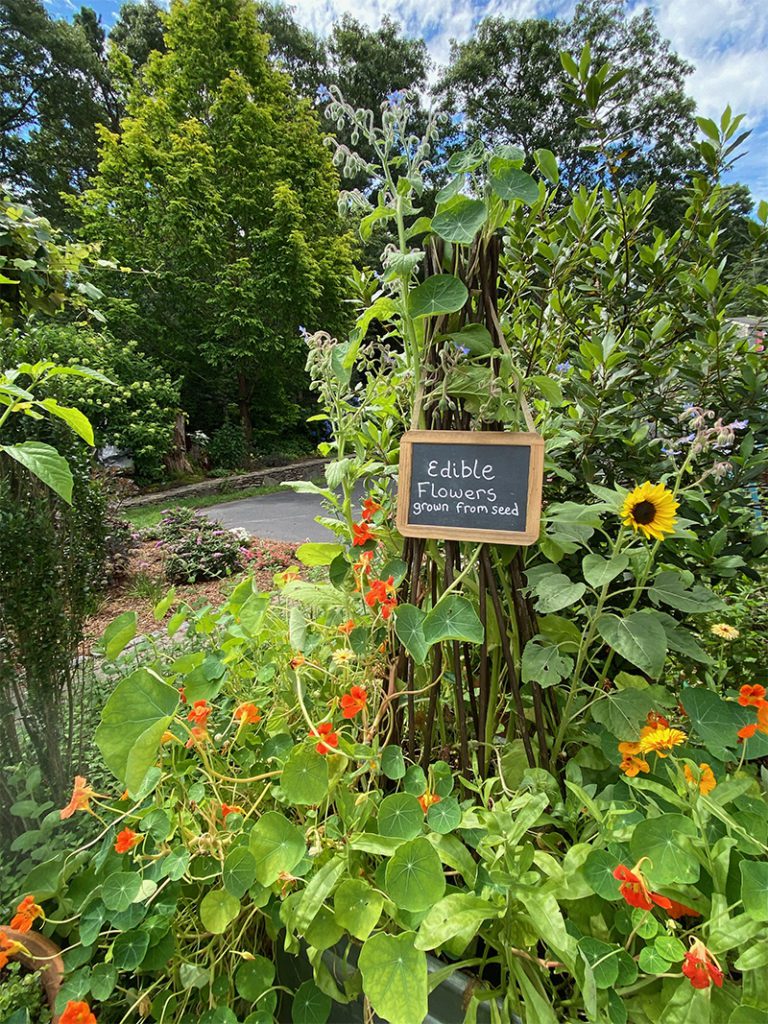
Some of the best flowers to grow for use in the kitchen are these:
Borage: This herb has brilliant blue flowers that taste like cucumber. It is easy to grow from seed. Plant these in full sun. This is also a flower that the bees love, so it’s perfect to support the bees and attract pollinators to your vegetable or herb garden. Borage flowers are lovely floating on a cocktail, or used as a garnish on potato salad.
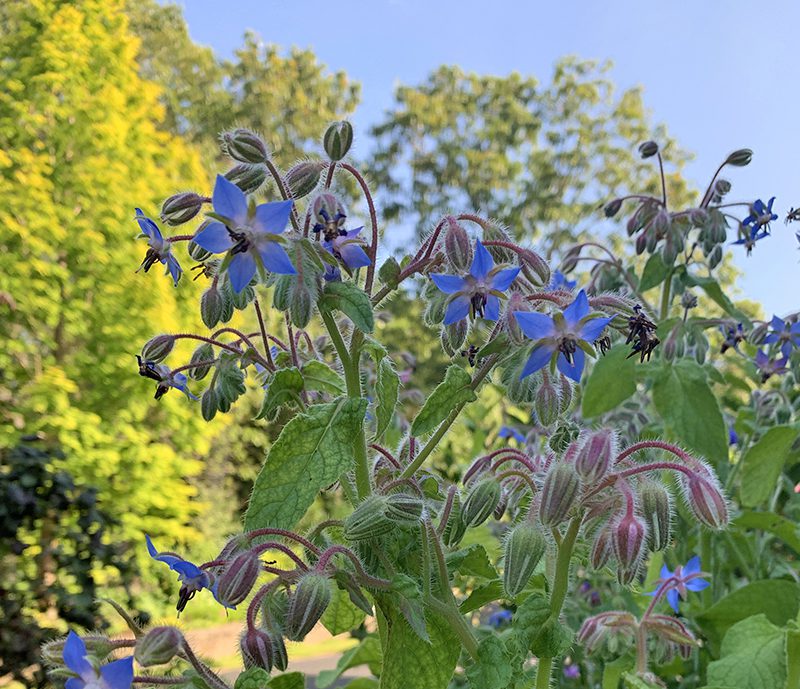
Calendula: Sometimes called “pot marigold,” calendula can be grown from plants or seeds. The flowers range from peach to orange or yellow, depending on the variety. Pull the petals off of the flower and scatter them on a salad, or on top of vegetables just before serving. The flavor of Calendula flowers is mild.
Nasturtiums: The most versatile flower for the kitchen is the Nasturtium. The flowers are delicious in fish tacos, sandwiches, sushi, or in salads. You can even muddle them in a cocktail shaker and create Nasturtium flavored martinis or sparkling water.
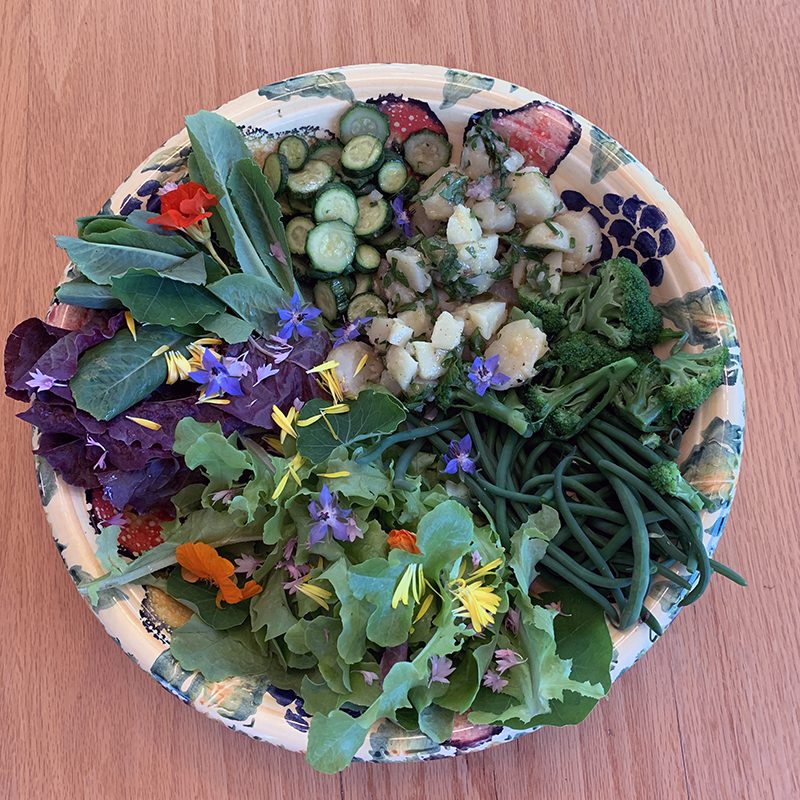
Mint: Most people use the leaves of mint in beverages and cooking, but the flowers are also edible and whimsical. They are the perfect garnish for beverages, be they cocktails or glasses of iced tea and lemonade. The flowers on apple mint are long and fuzzy, and peppermint blooms are in round clusters up the stem. (See garnish on the drink below…those are peppermint flowers).
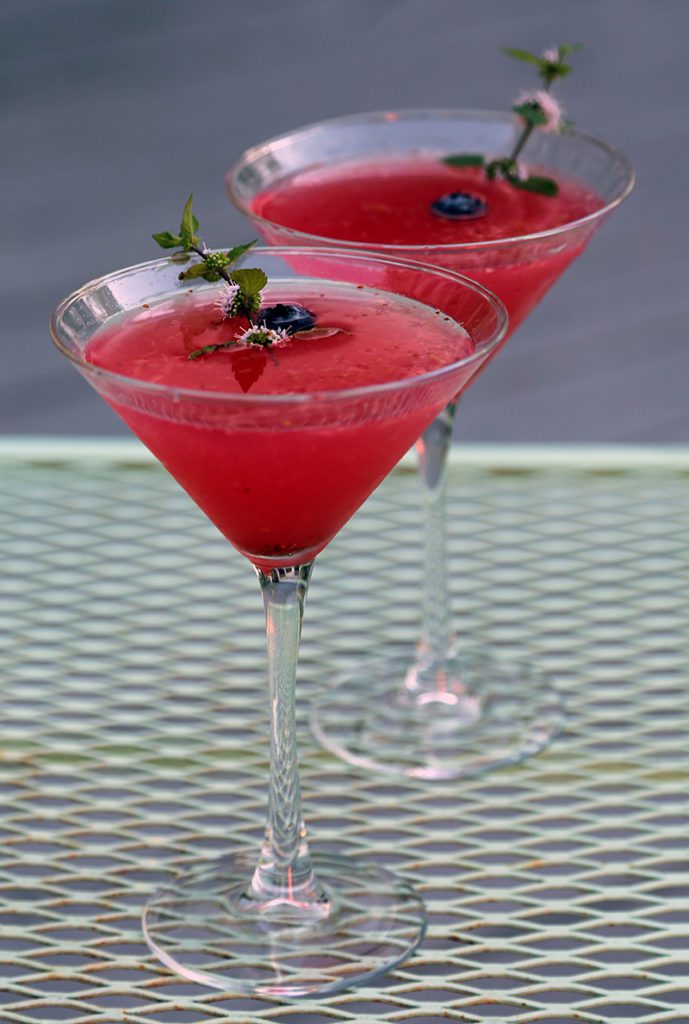
Bee Balm, aka Monarda: Bee balm petals have a stronger flavor than many flowers. In fact, Monarda flowers taste similar to oregano. For this reason, they are wonderful sprinkled on top of pizza right after you take it out of the oven. A “white pizza,” made with olive oil, garlic and cheese, is especially festive when topped by bright red or pink bee balm petals.
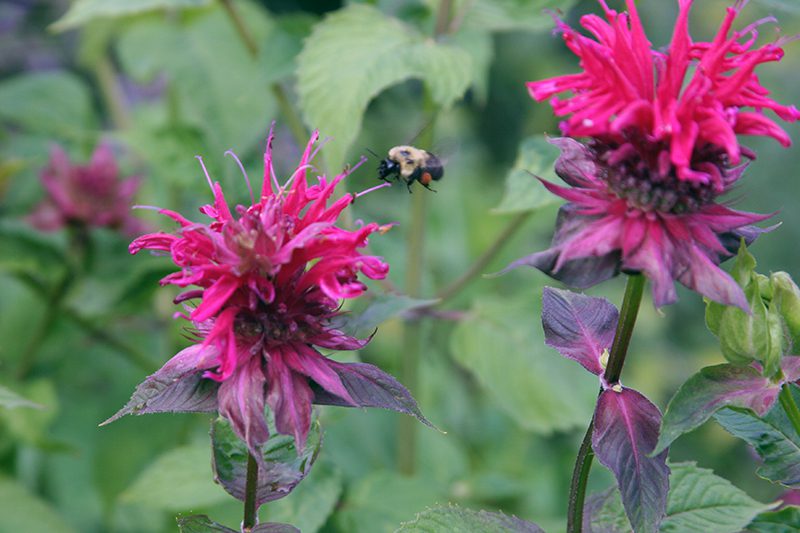
Other plants with edible flowers or petals include sunflowers, violas, tulips, summer phlox, and roses. Flowers from arugula, dill, broccoli, and cilantro are also edible, so when these herbs and vegetables come into bloom make use of these blossoms! Be sure the flowers you are eating are organically grown, of course. That’s one advantage of growing your these plants in your own garden…you can be sure that no pesticides are used.
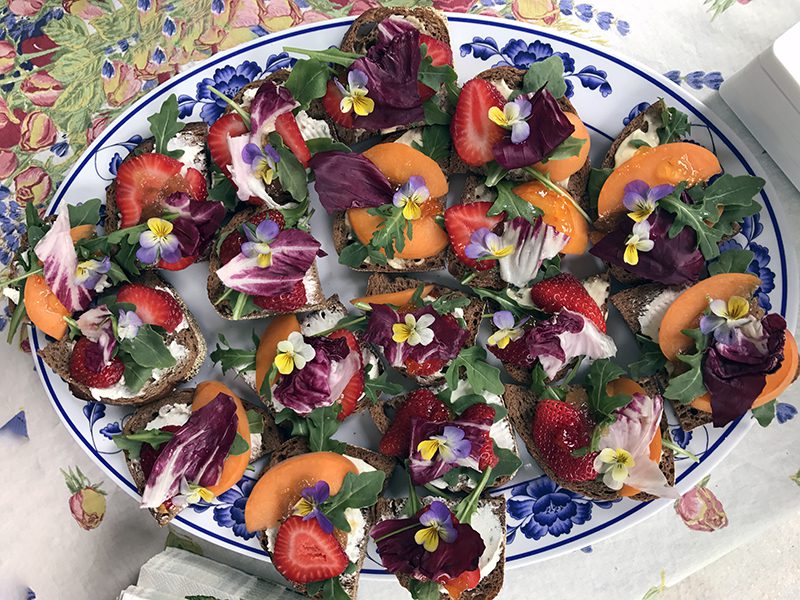
Not all flowers are edible, of course, so be sure that you are sure about the identity of a plant before you add it to your plate. Bon appétit!
Subscribe To Our Newsletter
Sign up for our weekly email about sales and events.
